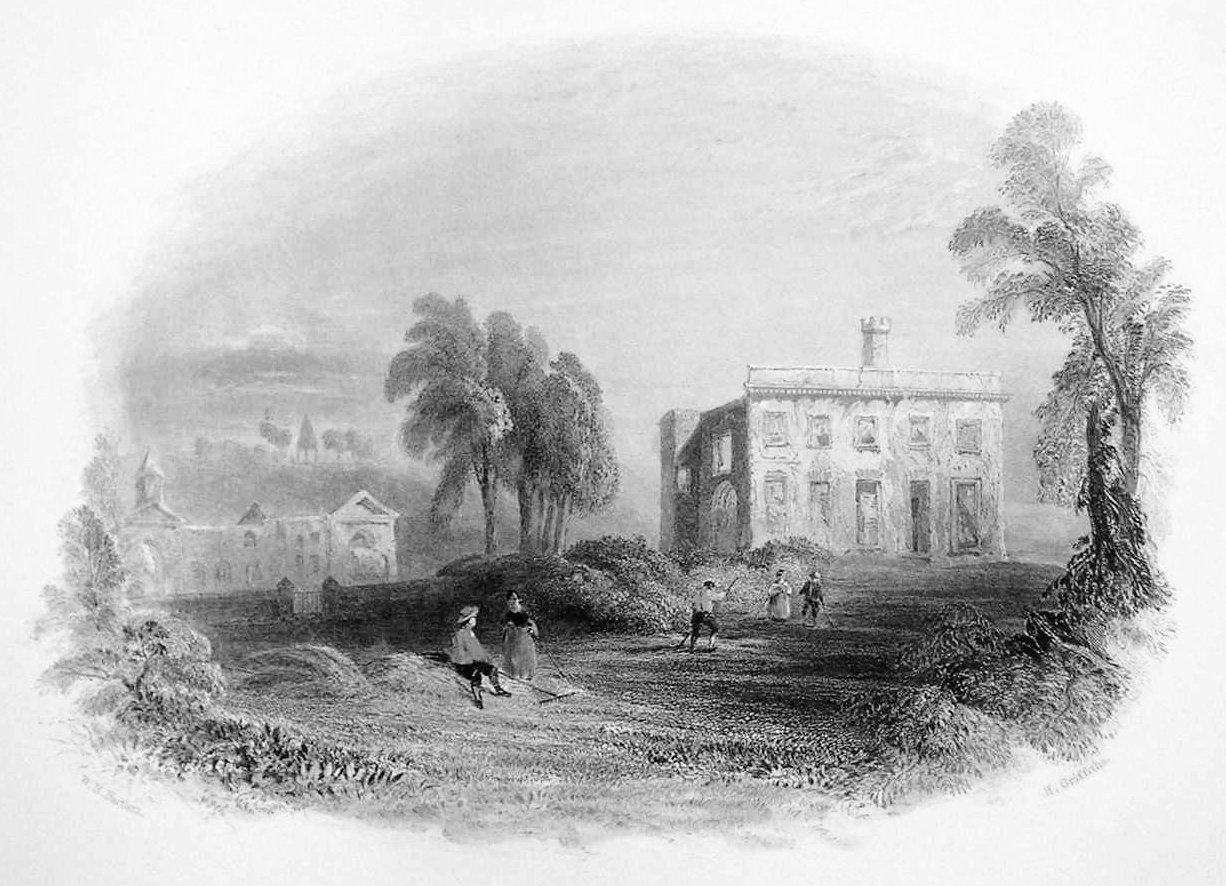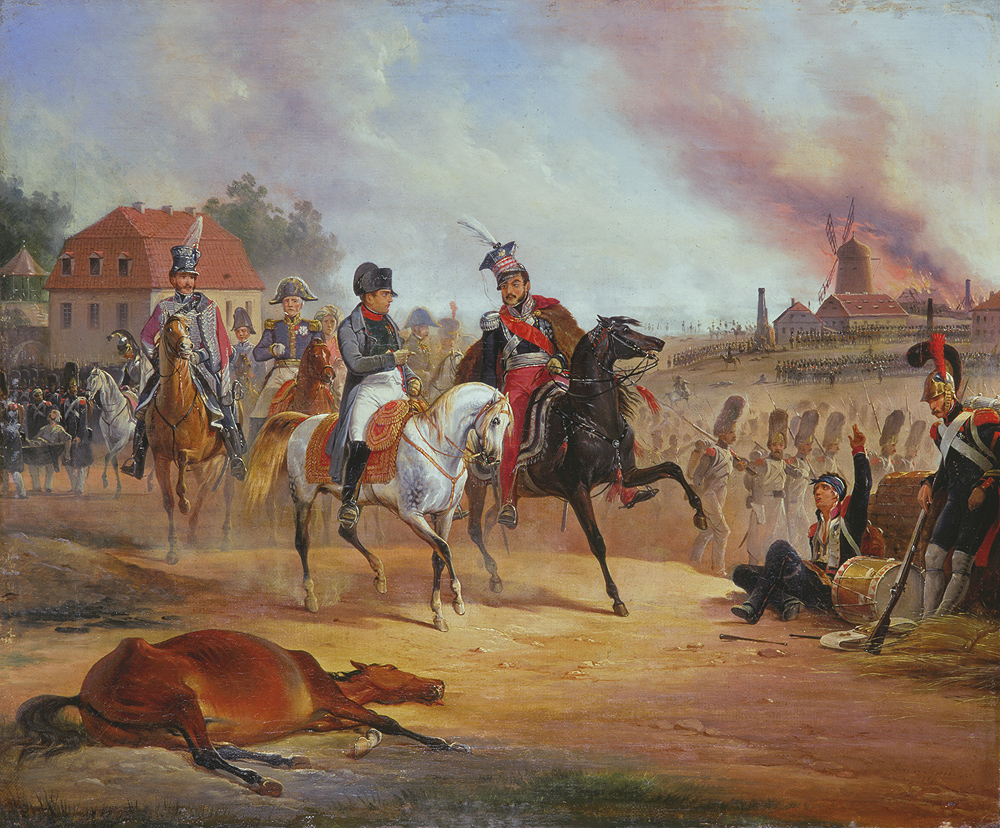|
Jacques Boudin De Tromelin
Jacques Jean-Marie François Boudin, comte de Tromelin (22 August 1771, in Ploujean, now part of Morlaix, Finistère – 3 March 1842, in Ploujean) was a French general of the First French Empire. Life Born into an old noble Breton family near Morlaix, his ancestors included several army and navy officers. His father was Nicolas Boudin de Tromelin, lord of Tromelin (1727-1790), and his mother Geneviève du Buisson de Vieux Châtel. After studying at the École militaire de Vendôme and graduating in 1787, he entered the régiment de Limousin in 1788. It was then garrisoning Corsica. At the start of the French Revolution he and his family emigrated. Jacques joined the Armée des Princes in 1792, fighting in all the campaigns on the Rhine and in western France as well as the Quiberon Expedition of 1795. He managed to escape the executions after the expedition's failure and returned to London, living modestly and taking drawing lessons. Missing France, he convinced William Sidney ... [...More Info...] [...Related Items...] OR: [Wikipedia] [Google] [Baidu] |
Ploujean
Ploujean is a former commune of Finistère which is part of Morlaix since February 22, 1959. The church was built in the 15th century. It has been listed as a '' Monument historique'' since 1914 by the French Ministry of Culture, and its organ, built by Thomas Dallam II in the 17th century, has been listed since 1992. It is the birthplace of the Breton poets Tristan Corbière and Olivier Souvestre (1835–1871). It is also the place where Gabriel Pierné died in 1937. The population was 3,142 at the 1954 census. Morlaix's airport, in Ploujean, is Morlaix – Ploujean Airport. Brit Air, a regional airline and Air France subsidiary, was headquartered by the airport in Ploujean. In 2013 the airline merged into HOP!. ." '' |
Jean Claude Hippolyte Méhée De La Touche
Jean may refer to: People * Jean (female given name) * Jean (male given name) * Jean (surname) Fictional characters * Jean Grey, a Marvel Comics character * Jean Valjean, fictional character in novel ''Les Misérables'' and its adaptations * Jean Pierre Polnareff, a fictional character from ''JoJo's Bizarre Adventure'' Places * Jean, Nevada, USA; a town * Jean, Oregon, USA Entertainment * Jean (dog), a female collie in silent films * "Jean" (song) (1969), by Rod McKuen, also recorded by Oliver * ''Jean Seberg'' (musical), a 1983 musical by Marvin Hamlisch Other uses * JEAN (programming language) * USS ''Jean'' (ID-1308), American cargo ship c. 1918 * Sternwheeler Jean, a 1938 paddleboat of the Willamette River See also *Jehan * * Gene (other) * Jeanne (other) * Jehanne (other) * Jeans (other) * John (other) John is a common English name and surname: * John (given name) * John (surname) John may also refer to: New ... [...More Info...] [...Related Items...] OR: [Wikipedia] [Google] [Baidu] |
Tarragona
Tarragona (, ; Phoenician: ''Tarqon''; la, Tarraco) is a port city located in northeast Spain on the Costa Daurada by the Mediterranean Sea. Founded before the fifth century BC, it is the capital of the Province of Tarragona, and part of Tarragonès and Catalonia. Geographically, it is bordered on the north by the Province of Barcelona and the Province of Lleida. The city has a population of 201,199 (2014). History Origins One Catalan legend holds that Tarragona was named for ''Tarraho'', eldest son of Tubal in c. 2407 BC; another (derived from Strabo and Megasthenes) attributes the name to ' Tearcon the Ethiopian', a seventh-century BC pharaoh who campaigned in Spain. The real founding date of Tarragona is unknown. The city may have begun as an Iberian town called or , named for the Iberian tribe of the region, the Cossetans, though the identification of Tarragona with Kesse is not certain. William Smith suggests that the city was probably founded by the Phoenicians, w ... [...More Info...] [...Related Items...] OR: [Wikipedia] [Google] [Baidu] |
Igualada
Igualada () is a municipality in the province of Barcelona in Catalonia, Spain. It is located on the left bank of the Anoia River and at the western end of the Igualada-Martorell-Barcelona Railway. Igualada is the capital and central market of the Anoia comarca, a rich agricultural and wine-producing district. The population, , is 38,918. The city consists of an old town, founded in the 11th century, with narrow and irregular streets, including the remains of a fortress and ramparts, plus a new surrounding town with regular and spacious streets and many fine houses. The city is west of Barcelona and west of the famous mountain and monastery of Montserrat. Igualada hosts the European Balloon Festival, the largest hot air balloon festival in Spain and one of the largest in Europe. It has taken place every year, since 1997, at the beginning of July. The city also hosts the Aerosport airshow, which takes place every year in April or May. History COVID-19 pandemic Igualada ... [...More Info...] [...Related Items...] OR: [Wikipedia] [Google] [Baidu] |
Hundred Thousand Sons Of Saint Louis
"The Hundred Thousand Sons of Saint Louis" was the popular name for a French army mobilized in 1823 by the Bourbon King of France, Louis XVIII, to help the Spanish Royalists restore King Ferdinand VII of Spain to the absolute power of which he had been deprived during the Liberal Triennium. Despite the name, the actual number of troops was around 60,000. The force comprised some five army corps (the bulk of the French regular army) and was led by the Duke of Angoulême, the son of the future King Charles X of France. The French name of the conflict is ''l'Expédition d'Espagne'' ("the Expedition of Spain"). Context In 1822, Ferdinand VII applied the terms of the Congress of Vienna, lobbied for the assistance of the other absolute monarchs of Europe, in the process joining the Holy Alliance formed by Russia, Prussia, Austria and France to restore absolutism. In France, the ultra-royalists pressured Louis XVIII to intervene. To temper their counter-revolutionary ardor, the Duc de ... [...More Info...] [...Related Items...] OR: [Wikipedia] [Google] [Baidu] |
Arthur Wellesley, 1st Duke Of Wellington
Arthur Wellesley, 1st Duke of Wellington, (1 May 1769 – 14 September 1852) was an Anglo-Irish people, Anglo-Irish soldier and Tories (British political party), Tory statesman who was one of the leading military and political figures of United Kingdom of Great Britain and Ireland, 19th-century Britain, serving twice as prime minister of the United Kingdom. He is among the commanders who won and ended the Napoleonic Wars when the coalition defeated Napoleon at the Battle of Waterloo in 1815. Wellesley was born in Dublin into the Protestant Ascendancy in Kingdom of Ireland, Ireland. He was commissioned as an Ensign (rank), ensign in the British Army in 1787, serving in Ireland as aide-de-camp to two successive lords lieutenant of Ireland. He was also elected as a Member of Parliament (United Kingdom), member of Parliament in the Irish House of Commons. He was a colonel by 1796 and saw Flanders Campaign, action in the Netherlands and in India, where he fought in the Fourth Angl ... [...More Info...] [...Related Items...] OR: [Wikipedia] [Google] [Baidu] |
Battle Of Waterloo
The Battle of Waterloo was fought on Sunday 18 June 1815, near Waterloo (at that time in the United Kingdom of the Netherlands, now in Belgium). A French army under the command of Napoleon was defeated by two of the armies of the Seventh Coalition. One of these was a British-led coalition consisting of units from the United Kingdom, the Netherlands, Hanover, Brunswick, and Nassau, under the command of the Duke of Wellington (referred to by many authors as ''the Anglo-allied army'' or ''Wellington's army''). The other was composed of three corps of the Prussian army under the command of Field Marshal von Blücher (the fourth corps of this army fought at the Battle of Wavre on the same day). The battle marked the end of the Napoleonic Wars. The battle was contemporaneously known as the Battle of Mont Saint-Jean (France) or La Belle Alliance ("the Beautiful Alliance" – Prussia). Upon Napoleon's return to power in March 1815, many states that had previously opposed ... [...More Info...] [...Related Items...] OR: [Wikipedia] [Google] [Baidu] |
Hundred Days
The Hundred Days (french: les Cent-Jours ), also known as the War of the Seventh Coalition, marked the period between Napoleon's return from eleven months of exile on the island of Elba to Paris on20 March 1815 and the second restoration of King Louis XVIII on 8 July 1815 (a period of 110 days). This period saw the War of the Seventh Coalition, and includes the Waterloo Campaign, the Neapolitan War as well as several other minor campaigns. The phrase ''les Cent Jours'' (the hundred days) was first used by the prefect of Paris, Gaspard, comte de Chabrol, in his speech welcoming the king back to Paris on 8 July. Napoleon returned while the Congress of Vienna was sitting. On 13March, seven days before Napoleon reached Paris, the powers at the Congress of Vienna declared him an outlaw, and on 25March Austria, Prussia, Russia and the United Kingdom, the four Great Powers and key members of the Seventh Coalition, bound themselves to put 150,000 men each into the field to ... [...More Info...] [...Related Items...] OR: [Wikipedia] [Google] [Baidu] |
Battle Of Leipzig (1813)
The Battle of Leipzig (french: Bataille de Leipsick; german: Völkerschlacht bei Leipzig, ); sv, Slaget vid Leipzig), also known as the Battle of the Nations (french: Bataille des Nations; russian: Битва народов, translit=Bitva narodov), was fought from 16 to 19 October 1813 at Leipzig, Saxony. The Coalition armies of Austria, Prussia, Sweden, and Russia, led by Tsar Alexander I and Karl von Schwarzenberg, decisively defeated the ''Grande Armée'' of French Emperor Napoleon Bonaparte. Napoleon's army also contained Polish and Italian troops, as well as Germans from the Confederation of the Rhine (mainly Saxony and Württemberg). The battle was the culmination of the German Campaign of 1813 and involved 560,000 soldiers, 2,200 artillery pieces, the expenditure of 400,000 rounds of artillery ammunition, and 133,000 casualties, making it the largest battle in Europe prior to World War I. Decisively defeated again, Napoleon was compelled to return to France while ... [...More Info...] [...Related Items...] OR: [Wikipedia] [Google] [Baidu] |
Count Of The Empire
As Emperor of the French, Napoleon I created titles of nobility to institute a stable elite in the First French Empire, after the instability resulting from the French Revolution. Like many others, both before and since, Napoleon found that the ability to confer titles was also a useful tool of patronage which cost the state little treasure. In all, about 2,200 titles were created by Napoleon: * Princes and Dukes: **Princes of the Imperial family ***The Imperial Prince (Napoleon's son, Napoleon II) ***Princes of France (8 close family members) ** sovereign princes (3) ** duchies grand fiefs (20) ** victory princes (4) ** victory dukedoms (10) ** other dukedoms (3) * Counts (251) * Barons (1,516) * Knights (385) Napoleon also established a new knightly order in 1802, the Légion d'honneur, which is still in existence today. The Grand Dignitaries of the French Empire ranked, regardless of noble title, immediately behind the Princes of France. Creation Ennoblement started in ... [...More Info...] [...Related Items...] OR: [Wikipedia] [Google] [Baidu] |





